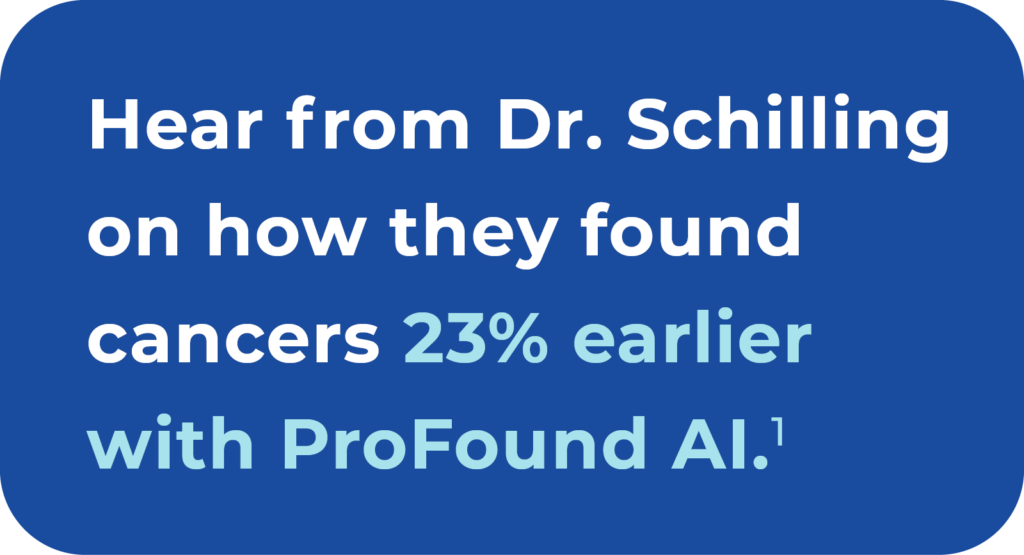Take Charge of Your Health.
Regular mammograms are a vital tool in the early detection of breast cancer. When caught early, breast cancer is often more treatable, leading to better outcomes and increased survival rates. Yet, many women delay or avoid getting their screening mammograms due to various concerns, fears, and lack of resources. Understanding and overcoming these barriers can empower more women to take charge of their health as we work together to find ways to overcome them.
Why some women delay getting mammograms

Fear often leads to inaction.
Fear of Pain: Does it really hurt?
A common fear that prevents many women from scheduling their mammogram is the expectation of pain or discomfort during the procedure.
While it is true that some women experience brief discomfort due to the compression required for accurate imaging, it typically lasts only a few seconds and is typically milder than women fear it to be.
Good News! Technology has improved, and technologists are trained to make the experience as quick and comfortable as possible. More importantly, the temporary discomfort of a mammogram can provide life-saving information that’s far more valuable than the momentary unease.
Fear of Discovery: Would I be better off staying in the dark?
For some, the fear of discovering something serious, like cancer, is overwhelming enough to delay getting screened. However, ignoring potential issues does not make them go away. In fact, early detection is crucial.
You’re Empowered! Finding cancer early through a mammogram, particularly a mammogram read with the assistance of AI, can mean less aggressive treatment and a higher chance of survival. It’s important to shift the mindset from fear of discovery to one of empowerment—knowing that getting screened means taking control of your health.
Fear of Uncertain Results: Are they ever wrong?
Another reason women may avoid mammograms is the fear of being called back for additional tests after an initial screening.2 While recalls can be stressful, they don’t necessarily mean something is wrong. Often, the radiologist simply needs more detailed images to ensure everything is okay.
Good News! The majority of recalls do not result in a cancer diagnosis, and getting more information is a proactive step towards health. According to one study, approximately 12% of women are recalled for additional workup after a screening mammogram, with 36-56% of women experiencing a false-positive recall over 10 years of annual or biennial screening.3
Better yet, when radiologists use ProFound AI Breast Health Suite, there is an increase in accuracy and a reduction in unnecessary recalls for their patients.1,4 In Dr. Conant’s reader study on ProFound AI Detection, they decreased recalls by 7.2%, while improving sensitivity by 8.4%.4
Fear of Radiation: Are mammograms safe?
The amount of radiation used in a mammogram is very low; according to American Cancer Society, it’s comparable to amount of radiation a person would naturally be exposed to over about 7 weeks.5
Good News! The risk from this small amount of radiation is minimal compared to the potential benefits of early cancer detection. If you’re concerned, talk to your healthcare provider to better understand the safety of the procedure.
Lack of Resources often leads to inaction.
Lack of Clarity: Why is all the advice so confusing?
Confusion about when to start and how often to get a mammogram, as well as misconceptions about personal risk, can delay women scheduling care with their physician.
Some women believe they don’t need a mammogram if they don’t have a family history of breast cancer. In reality, while family history does increase your risk, 80-85% of women diagnosed with breast cancer have no family history.6
Similarly, varying guidelines from different medical organizations can cause uncertainty. Guidelines are overwhelmingly in agreement to get your first mammogram at 40, then continue every 1-2 years, depending on a personalized care plan designed by your doctor.
Talk to your healthcare provider to determine the screening schedule that’s right for you, based on your age, personal risk factors, and medical history.
Learn More: Know Before: Breast Cancer Risk Factors at Every Age
Lack of Insurance: Isn’t it expensive?
The cost of a mammogram can be a significant deterrent for women without insurance or with limited financial resources. Fortunately, there are many programs that offer free or low-cost mammograms to those who qualify. Organizations like the National Breast and Cervical Cancer Early Detection Program (NBCCEDP) provide screening services to uninsured and underinsured women.
If financial concerns are holding you back, explore these programs or talk to your healthcare provider about available options. Local clinics and advocacy groups often support women with free and very low-cost mammogram options.
Lack of Access: Can I be seen on my schedule?
For women living in rural or remote areas, getting access to mammography services can be a significant challenge. Limited facilities, long travel distances, and strict work schedules can make scheduling a screening difficult. Fortunately, mobile mammography units are expanding access to underserved areas. If you live in a rural location, check for mobile screening options near you, or contact local healthcare providers for assistance in finding the nearest facility.
Many screening centers now offer extended hours and weekend appointments to accommodate women with busy work and family commitments. Additionally, some healthcare organizations provide transportation services or partner with local community groups to help patients in getting to their appointments. Don’t hesitate to ask for help when needed.
Lack of Urgency: Aren’t I too young to worry about it?
Do any of these statements sound familiar?
- My breasts feel fine.
- I don’t have a family history of breast cancer.
- I’m way too young to get breast cancer.
It’s easy to procrastinate when something doesn’t seem urgent. Without symptoms or immediate health concerns, a mammogram might not feel like a priority. However, breast cancer can develop without any symptoms, which is why regular screening is essential for early detection.
Schedule your mammogram as part of your annual healthcare routine starting at age 40, and don’t wait for something to feel wrong—take action before it’s discovered at a stage where you have fewer, and more costly treatment options.
Conclusion: Early Detection Saves Lives
While there are many reasons women may delay or avoid getting a mammogram, addressing these barriers can help save lives. Whether your hesitation stems from fear, practical concerns, or misconceptions, it’s important to remember that a mammogram is a simple, quick procedure that could have a life-changing impact.
AI-powered mammography helps find cancer even faster!
Early detection remains one of the most effective ways to fight breast cancer, and having it read by a radiologist assisted by ProFound AI Breast Health Suite helps improve early detection and reduce false recalls.
Don’t wait, schedule your mammogram today!
Schedule your mammogram and discover more:
References:
1. https://www.ncbi.nlm.nih.gov/pmc/articles/PMC3519312
2. Schilling, K. Real-World breast cancer screening performance with digital breast tomosynthesis before and after implementation of an artificial intelligence detection system. Research presentation presented at European Congress of Radiology (ECR) 2023; March 1-5, 2023; Vienna, Austria.
3. https://www.acpjournals.org/doi/10.7326/M24-0123
4. https://www.ncbi.nlm.nih.gov/pmc/articles/PMC10044471
5. https://www.ncbi.nlm.nih.gov/pmc/articles/PMC6677281/
6. https://www.maurerfoundation.org/should-you-be-worried-about-the-radiation-dose-of-a-mammogram/

